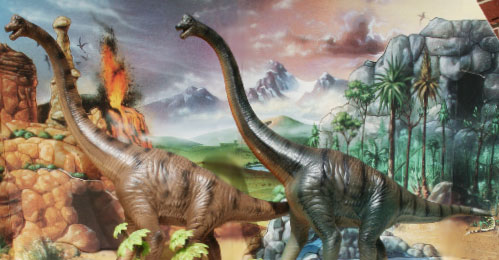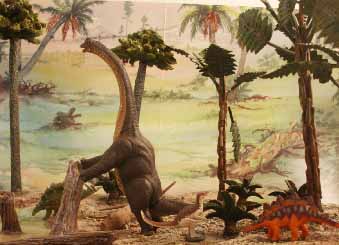LATE JURASSIC MORRISON FORMATION Brachiosaurus.
Mouse over the graphics for more figure info.
updated 050612
Brachiosaurs shared the Mesozoic with the giant diplodocids Apatosaurus, Diplodocus and Barosaurus, but they are significantly different from the diplodocids. Brachiosaurus has longer front legs than rear legs, a smaller tail, and the teeth that are very strong and spoon shaped. Its neck is constructed to facilitate high browsing, making the Giraffe the best modern analogue. While brachiosaurs are not the most common animals in any area, they are wide spread; with fossils being found from North America to Africa.
The family continues to be important in North America in the Early Cretaceous, when the diplodocids become rare in the fossil record. This pattern implies that the brachiosaurs were less specialized in their feeding habits than the diplodocus family, less specialized feeders commonly are spread wider, less common and are less vulnerable to extinction.
They are thought to be related to the titanosaurs that dominated the southern continents in Gondwanaland in the Late Cretaceous.Brachiosaurs are built to feed high. Trees get taller in the Jurassic as the world gets wetter. Arucaria, Redwoods and Sequoias become wide spread but most of the trees in the Morrison are medium heigth. The most common recombination is for scattered trees and plains of ferns in the wet season.



